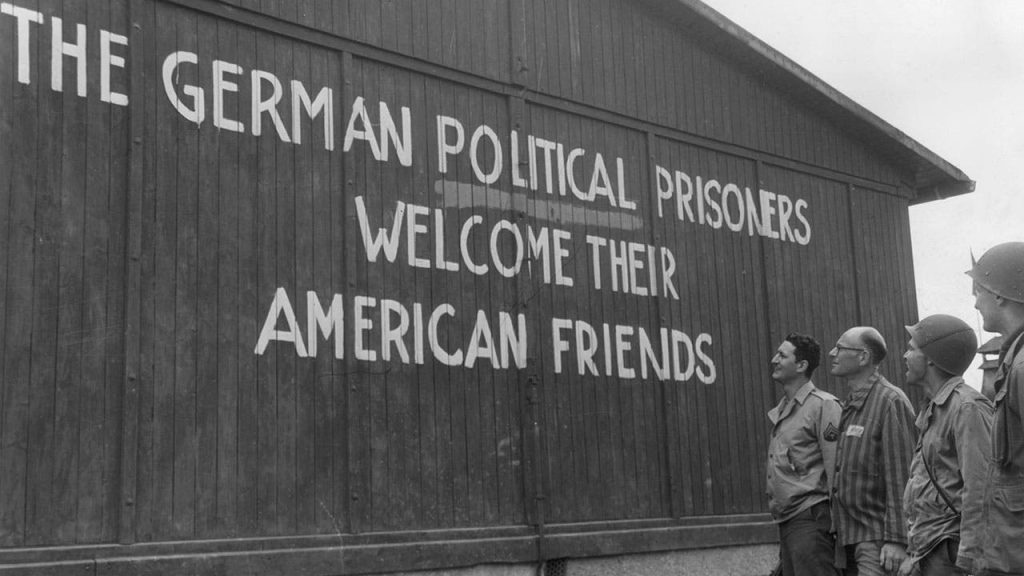Elements of George Patton’s Third Army faced the horrors of Hitler’s National Socialist Workers Party when U.S. troops liberated the Buchenwald concentration camp on April 11, 1945. The camp, located near Weimar, Germany, was one of the largest and most horrific of the concentration camps operated by Adolf Hitler’s Germany during World War II. Buchenwald housed and killed hundreds of thousands of people, including Jews, political enemies, criminals, and other minorities deemed undesirable by the Nazis. The conditions at the camp were horrendous, with thousands of prisoners dying from starvation, disease, and other abuses.
When U.S. troops arrived at Buchenwald, they found 21,000 prisoners, including 900 children, many of whom were on the brink of death. The camp had originally held over a quarter of a million people from over 50 countries. It is estimated that around 56,000 prisoners died at Buchenwald, while 23,000 managed to escape before the arrival of the U.S. forces. The troops were shocked by the inhumane treatment of the prisoners, with one soldier describing the scene as unimaginable. The Buchenwald concentration camp served as a stark reminder of the Holocaust and the atrocities committed by the Nazis during World War II.
The horrifying reality of the Holocaust began to reach the U.S. and its Allies in August 1942, when the Riegner Telegram reported that millions of European Jews were being murdered by the Nazis. Initially, the U.S. State Department dismissed the news as a rumor of war. However, after further investigation, the State Department verified the reports and authorized American Rabbi Stephen S. Wise to inform the public. The news of the genocide sparked international outrage and led to rallies and vigils in Allied nations, as well as a condemnation of the atrocities in a joint declaration by Allied governments.
On April 11, 1945, armored units of the U.S. Third Army advanced towards Buchenwald, leading to the liberation of the camp by U.S. troops. Nazi officers ordered the SS troops running the camp to flee, allowing the prisoners to take control of the camp. The horrors witnessed by the U.S. troops at Buchenwald, as well as other concentration camps like Ohrdruf, left a lasting impact on those who were there. Supreme Allied Commander U.S. Gen. Dwight D. Eisenhower, who visited the camps, expressed his shock and disgust at the starvation, cruelty, and bestiality he witnessed, vowing to provide first-hand evidence of the atrocities to combat any future claims of propaganda.
The liberation of Buchenwald and other concentration camps served as a turning point in World War II, as the Allies began to confront the full extent of Nazi brutality and genocide. The horrors of the Holocaust, which resulted in the deaths of approximately 6 million Jews, galvanized the international community to take action against war criminals and to prevent such atrocities from happening again. The liberation of Buchenwald stands as a testament to the resilience of the human spirit in the face of unimaginable evil, and a reminder of the importance of standing up against injustice and hatred.


